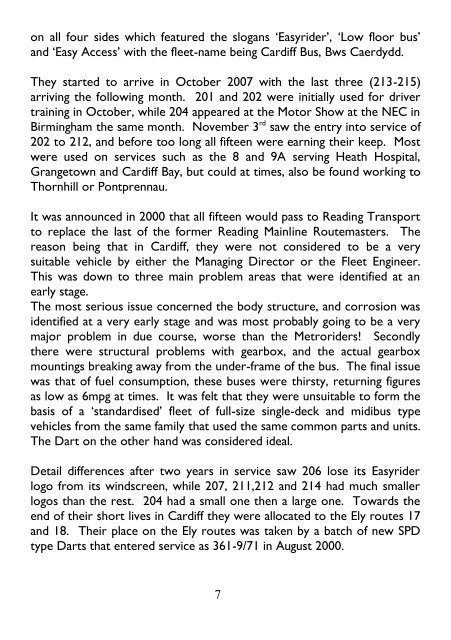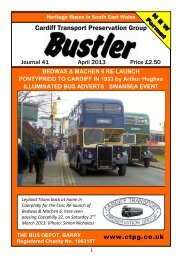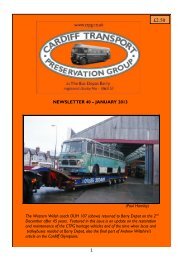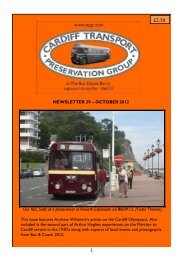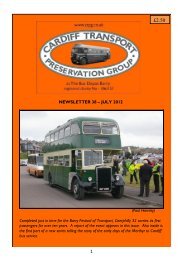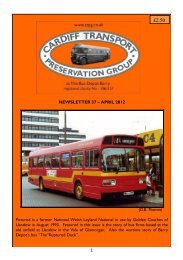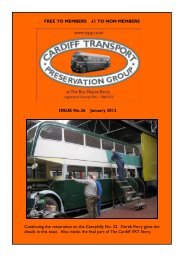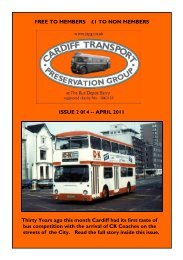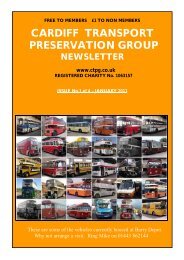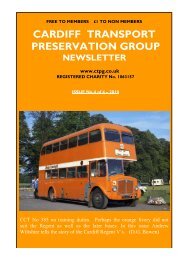You also want an ePaper? Increase the reach of your titles
YUMPU automatically turns print PDFs into web optimized ePapers that Google loves.
on all four sides which featured the slogans ‘Easyrider’, ‘Low floor bus’<br />
and ‘Easy Access’ with the fleet-name being Cardiff Bus, Bws Caerdydd.<br />
They started to arrive in October 2007 with the last three (213-215)<br />
arriving the following month. 201 and 202 were initially used for driver<br />
training in October, while 204 appeared at the Motor Show at the NEC in<br />
Birmingham the same month. November 3 rd saw the entry into service <strong>of</strong><br />
202 to 212, and before too long all fifteen were earning their keep. Most<br />
were used on services such as the 8 and 9A serving Heath Hospital,<br />
Grangetown and Cardiff Bay, but could at times, also be found working to<br />
Thornhill or Pontprennau.<br />
It was announced in 2000 that all fifteen would pass to Reading Transport<br />
to replace the last <strong>of</strong> the former Reading Mainline Routemasters. The<br />
reason being that in Cardiff, they were not considered to be a very<br />
suitable vehicle by either the Managing Director or the Fleet Engineer.<br />
This was down to three main problem areas that were identified at an<br />
early stage.<br />
The most serious issue concerned the body structure, and corrosion was<br />
identified at a very early stage and was most probably going to be a very<br />
major problem in due course, worse than the Metroriders! Secondly<br />
there were structural problems with gearbox, and the actual gearbox<br />
mountings breaking away from the under-frame <strong>of</strong> the bus. The final issue<br />
was that <strong>of</strong> fuel consumption, these buses were thirsty, returning figures<br />
as low as 6mpg at times. It was felt that they were unsuitable to form the<br />
basis <strong>of</strong> a ‘standardised’ fleet <strong>of</strong> full-size single-deck and midibus type<br />
vehicles from the same family that used the same common parts and units.<br />
The Dart on the other hand was considered ideal.<br />
Detail differences after two years in service saw 206 lose its Easyrider<br />
logo from its windscreen, while 207, 211,212 and 214 had much smaller<br />
logos than the rest. 204 had a small one then a large one. Towards the<br />
end <strong>of</strong> their short lives in Cardiff they were allocated to the Ely routes 17<br />
and 18. Their place on the Ely routes was taken by a batch <strong>of</strong> new SPD<br />
type Darts that entered service as 361-9/71 in August 2000.<br />
7


